Classification of cracks in concrete
Causes of occurrence
How and how to seal
How to fix it yourself
In concrete, cracks appear almost always, even in new buildings, because the pouring technology is not always followed, or a substandard mixture is used. They also happen from age, and although it may seem that there is no salvation, everything will crumble, you should not despair: you can still fix it. Cracks in concrete are the result of deformation from external loads or from the occurrence of internal stresses.
Classification of cracks in concrete
Bending: perpendicular to the axis of the tensile bending reinforcement. They start from the edge and end at the zero line.Shear cracks appear in the area of \u200b\u200btransverse stress and arise from bending stresses. They usually run diagonally to the reinforcement axis.
Through faults appear at central tension and go through the cross section.
Joint failures often occur in the anchorage area of \u200b\u200bthe bars and run parallel to the reinforcement. They occur in the corners of a strip-type foundation with improper anchoring or when poor-quality concrete is used, they lead to a stratification of the protective layer of the pour. Typical causes of support deformation: heaving, soil subsidence, rise when saturated with water, etc.
Internal stress deformations
Such stress occurs when the temperature difference on the surface and inside the concrete mass. The reason is the rapid cooling of the surface from cold air, water, or when a large amount of heat is radiated during the process of cement hydration. If the stresses exceed the strength of the material, surface cracks appear in the concrete. They go into a depth of several cm. Among the reasons for the occurrence of cracks are stresses from the sharp drying of the outer layer from exposure to air temperature or sunlight from high temperature air.According to the standards for conditions of variable freezing-thawing, the presence of shrinkage, surface technological cracks on the surface is allowed, but their width should not exceed 0.1 mm (GOST 13015-2003). It is believed that surface cracks after pouring in concrete are perpendicular to the reinforcement axes up to 0.4 mm in size, or up to 0.3 mm. but running along the reinforcement does not lead to a critical decrease in durability. It is only necessary to control the size of their opening, it is believed that these are permissible cracks in concrete, only they should be repaired on time.
Causes of occurrence
Since the tensile strength of concrete structures is low, then when they dry, they shrink and give shrinkage cracks in the concrete. The reasons for their formation are divided into three categories:1. Cracks affecting the strength of the structure ("Constructive"). They do not result in emergency condition structures. Structural cracks are often caused by:
a) Design errors;
b) mistakes during construction;
c) changes in the conditions of detention with overloads of the structure in excess of the design loads;
d) emergencies, such as explosion, earthquake, etc .;
2. Fire cracks... They can be constructive or non-constructive (structural). Delamination of the top layer is always observed.
3. Non-structural cracks... Include reasons not included in paragraphs. 1 and 2. They are divided into several types:
a) From plastic shrinkage;
b) temperature shrinkage cracks concrete at the initial stage;
c) shrink when dry;
d) cracks due to reinforcement corrosion.
How and how to seal
When repair work usually used is a wet cement "paste", a binder solution, a mixture with polyester or epoxy resin, as well as purchased repair mixtures.Repair of cracks (up to 3 mm.) Is carried out with a cement "test" or a special mixture. Mixing proportions: 1 part of Portland cement to 3 parts of water and sand + PVA glue. Large caverns and areas of loose concrete are sealed with crack sealant.
The most popular repair is injection. The essence of the method is that the work is carried out by "injecting" polymer materials into cavities without replacing the elements of the structure itself. The method is especially applicable for large volumes of work.
To repair vertical surfaces, they are covered with a mixture consisting of concrete mortar with polymer additive. For the additive, furyl alcohol (0.35% of the total mass) and 0.02% of sulfanol are suitable. After drying, the hardened mixture is additionally covered with polyurethane sealant.
Repairs can also be carried out by creating a layer of the same material on the surface. However, the use of this method is not always rational, since it is labor intensive and leads to an increase in construction weight, increasing the load on the foundation.
How to fix it yourself
By themselves, cracks in the concrete foundation are a source for the subsequent destruction of the structure. To restore the monolith yourself, you must first inspect the damage and determine the repair method.The grout should be started by cleaning the surface with a brush, detergent and water. Remove excess water. Remove all exfoliated fragments with a metal brush. Degrease the areas to be restored (with a preparation containing acid). Small cracks are cut with a spatula and deepened to 5 mm: this way the mortar fills the space more easily. We strengthen the deep ones: with a "grinder" we saw through the transverse grooves.
If the reinforcement is visible in the depths, it must be cleaned and treated with an anti-corrosion agent. Pieces of wire with a diameter of 4 mm are placed in the cleaned furrows.
A primer is applied over the entire repaired surface with a brush, its thickness is 3 mm. Then, without waiting for the final drying, we apply the repair mixture.
A situation often arises when the builder cannot understand why the concrete cracked after pouring. This is a fairly common phenomenon that leads to a deterioration in the performance of the material and its gradual destruction. We want to talk about the causes of cracks and how to prevent this phenomenon.
Cracking is a common occurrence when working with concrete.
Cracks in concrete
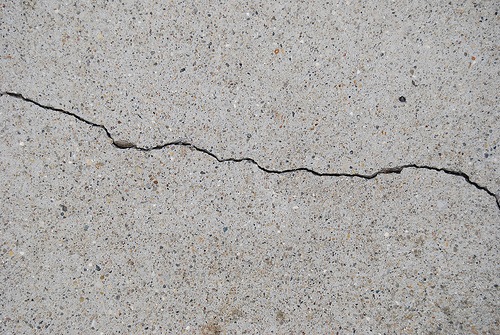
Cracking of concrete structures leads to a decrease in their quality.
Cracking of concrete is a widespread phenomenon that occurs for a number of reasons, and for the convenience of considering this topic, individual cases of this phenomenon should be classified.
So, all cracks can be divided into three large groups:
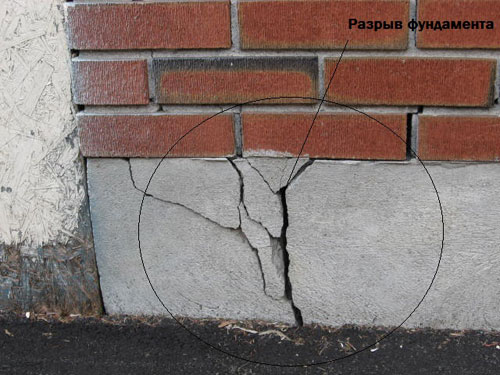
The photo shows a typical example of a structural crack.
Damages of the first group include violations of integrity caused by increased loads on parts, inconsistency of the strength of the material with real loads, errors of the architect in the design, errors in the design of the mixture composition, soil movements, natural disasters, impacts, explosions, etc.
Important!
Cracking is often observed due to mistakes when preparing concrete with your own hands.
The price of ready-mixed concrete hits the budget, but repairing a poor-quality foundation is much more expensive.
Structural defects are distinguished by a high opening width, great depth, through character, long length and special localization. Prevention of such damage is associated with competent design and calculation of loads, the use of high-quality materials, taking into account the peculiarities of geology and concerns, mainly, the technical and design preparation of construction.
It is practically impossible to take into account the influence of natural disasters and accidents, man-made disasters and wars, the same applies to violations due to fires.
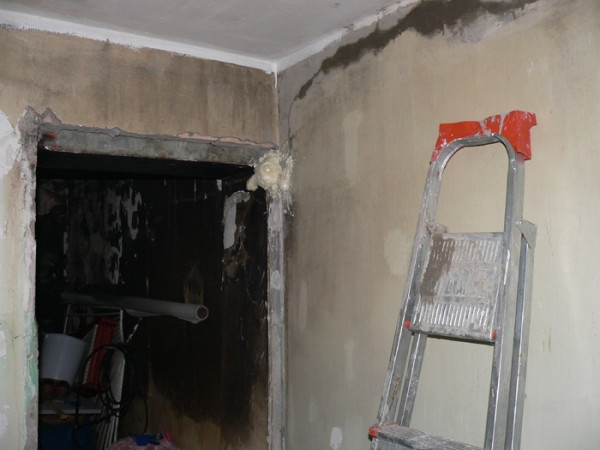
After fires, concrete cracking is almost always observed.
The second group of defects refers to violations of the structure and integrity of the material as a result of natural physical and chemical processes occurring in concrete at all stages of its maturation, especially at the initial stages.
There is a whole spectrum of phenomena that lead to the appearance of such defects:
- Plastic shrinkage cracks... They arise due to intensive evaporation of moisture from the surface and as a result of uneven shrinkage and compaction of the mass;
- Thermal shrinkage destruction... They appear due to the effect of thermal expansion-contraction of materials caused by heating and uneven cooling of the mixture;
- Shrinkage defects when the solution dries... They arise due to an uneven decrease in the volume of concrete during drying;
- Cracks due to reinforcement corrosion... With active rusting, steel expands and can break concrete.
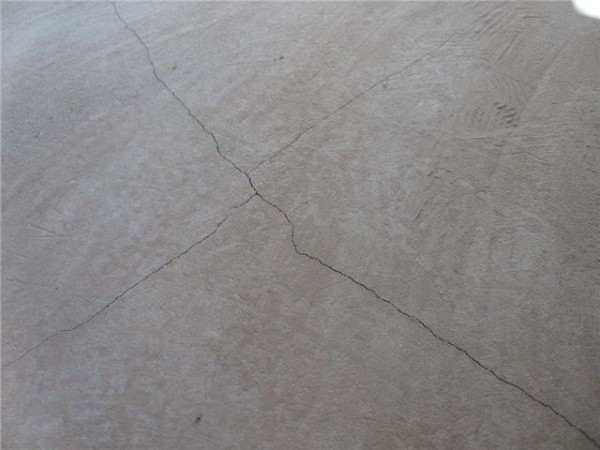
An example of shrinkage damage.
Important!
Preventing the appearance of cracks is a much more efficient and rational way than fixing and repairing them.
For successful prevention, you must know the causes of defects.
Causes of occurrence
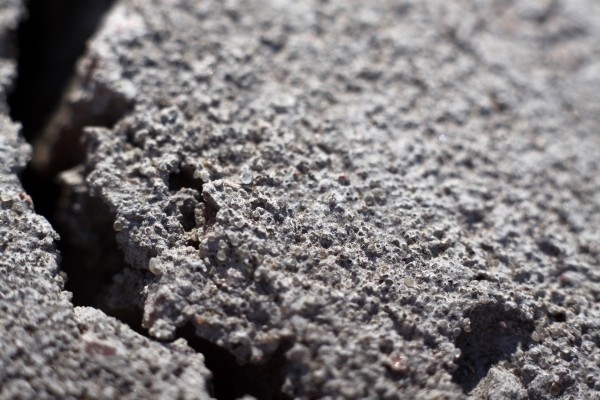
Most damage is caused by natural causes.
If everything is clear with the reasons for the appearance of structural defects, then structural violations should be considered in more detail. So let's start in order.
Plastic shrinkage is a process that occurs at the very beginning of the life of the solution. Here there is such an effect as intense evaporation of moisture from the open surface of the laid concrete. As a result, the mass of the solution actively decreases in volume, while the lower layers remain in the same size, and the upper layer is covered with a network of fine hair cracks.

Plastic shrinkage and moisture evaporation lead to hairline cracks.
Also, in the first period of the mortar's life, when laying, the process of shrinkage and compaction of the concrete mixture under the influence of gravity begins. In case of insufficient compaction with a vibrating tool, a moment occurs when the concrete has already grabbed, and its compaction continues. This leads to fractures.
Thermal shrinkage deformations appear due to the reaction of cement hydration, which occurs with the release of heat. The solution heats up, increasing in volume, while the hardening areas crack. The reverse process also affects - the upper layer cools down and decreases, while the lower one remains in the same size or increases, the result is material ruptures.
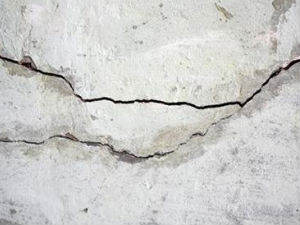
Thermal shrinkage damage.
Shrinkage cracks during drying are caused by the fact that the set material decreases in volume. This is typical for any type of concrete, glue and other hardening and drying substances. They are usually observed in unreinforced structures and products of flat, extended or irregular shape, as a large area concrete screed, plaster and similar structures crack.
Important!
Drying shrinkage often leads to worsening of other types of cracks and an increase in their degree of opening.
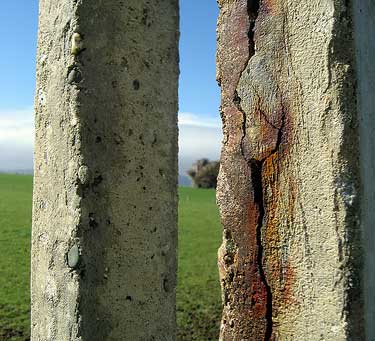
Corrosion rupture of concrete products.
Penetration of moisture inside concrete structure leads to corrosion of the metal inside it. As a result, the reinforcing bars expand and break the stone.
Prevention

Proper care will prevent damage.
To avoid the appearance of defects and cracks in concrete, you should adhere to the rules that contain instructions for concreting.
For the sake of brevity, here are three main points:
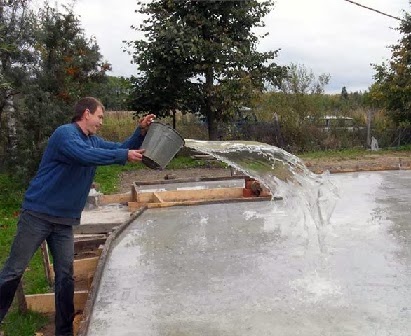
Moistening the surface prevents cracking.
Important! Observe the concreting conditions, namely: work in the correct temperature regime, control humidity, monitor changes in weather conditions, do not violate the framework under which work can be performed, do not neglect the technology of caring for hardening concrete and use high-quality materials.
For concreting critical units and structures, it is better to use high-quality ready-mixed concrete, since a home-made product most often demonstrates the listed phenomena, and they are different at the same time.

Protect material from sudden temperature changes.
Important! Do not dilute the concrete with water and do not add cement to it, this is a gross violation of technology and interference in the formulation of the mixture, the result of which is predictable.
Cracks lead to the fact that further processing and construction procedures lead to an aggravation of the state of the structure, only cutting of reinforced concrete with diamond wheels and diamond drilling of holes in concrete does not destroy it. To prevent such defects from arising, the technology of concrete work should be strictly observed, which is described in detail in the video in this article.
The foundation of any building is the main component of the future building. The type and quality of the house depends on it. It is a base that performs a load-bearing function and provides stability and durability.
Depending on use different materials, the characteristics of the structure being erected, its number of storeys, a foundation is being made, ready to provide the structure with the required bearing capacity.
The main task of the foundation is to evenly distribute the loads over the entire surface of the foundation, including the total weight of the structure. The durability and good performance of the structure will depend on how effectively it performs its main function.
Cracks as a result of calculation errors

When choosing the type of foundation with the required bearing capacity indicators, one proceeds from two fundamental groups of factors: natural and anthropological.
The first group includes the features of the construction site: the maximum depth of freezing, the presence of water and their level in the soil, the nature of these soils.
The second group is the factors caused by human activity. These include all structures that are nearby construction site and limiting design possibilities of the future building. In this case, it is possible to limit the height and number of storeys of the constructed structure.
A correctly calculated bearing capacity of the foundation will avoid partial deformation of the foundation, violation of its integrity or even complete destruction.
This mainly happens when trying to save money on the construction of the base with the design load. If you lay a large bearing capacity, additional, unnecessary costs will be required.
Errors in the process of pouring the base

Sometimes the appearance of cracks in the foundation is a direct consequence of violations during the work on the foundation. And, despite the fact that a number of emerging chips and cracks are not considered very serious by most builders, their appearance is by no means the norm to be followed.
Indeed, most cracks are repaired after base repair. But, in order for them not to appear again, it is necessary to identify the root cause of their occurrence. Having understood the reason, you can choose the best way to solve this unpleasant problem.
Experts call the most likely reasons for this destruction of the integrity of the surface not only incorrect calculations, but also the attempt of home owners to arrange the construction of the foundation with their own hands.
Among the miscalculations, the following errors are possible:
- wrong installed formwork, which does not allow, after completion, to obtain the necessary solidity of the structure;
- poorly reinforced inner part of the foundation;
- insufficient depth of the base for seasonal freezing of the soil at this construction site;
- selection of an unsuitable quality of concrete for pouring, which does not guarantee resistance to the effects of soils and loads;
- inconsistency of the laid down characteristics of the base and structural changes during and after construction, for example, additional building on the floor;
- water ingress into concrete base due to not made or improperly performed drainage.
The harmful influence of external factors
![]()
Groundwater forces (1); heaving of freezing soil (2); forces acting on the side parts (3.4) acting on the foundation
In addition to structural violations and non-compliance with all mandatory steps, damage is possible foundation slab after exposure to some natural factors.
One of the most common and dangerous defects concrete surface is cracking. Cracks in concrete after pouring, during operation or after mechanical processing can occur due to the influence of a huge number of factors.
The reason for this defect may be hidden both in the improper preparation of the solution, and in its transportation, laying or illiterate care.
Reasons for surface cracking
The causes of cracks in concrete can be very different.
There is a division of these factors into the following groups:
- Even at the stage of preparing the solution, an error may be made in the technology for preparing the building material, for example, the ratio of such components of the solution as water and cement may be violated. As a result of such violations construction material will refer to another brand, and therefore will not meet the stated requirements;
- Too long process of transporting concrete mass can lead to the beginning of such a process as "welding" of concrete;
- An error in calculations at the design stage can lead to the fact that an excessively high load will be exerted on the finished monolith already at the operation stage finished product... In this case, the cause of cracks may be insufficient reinforcement;
- Difficult operating conditions. So, for example, the designers may not take into account the presence of heaving soils on the building site;
- Violation of the technology for working with the mixture at the construction site:
- It is often possible to meet such a situation when water is added to the solution so that it is more convenient to pour and level it. But excess moisture interferes with the normal curing process;
- Also, cracks in reinforced concrete structures can be the result of improper laying of steel reinforcement or insufficient compaction of the concrete mass at the stage of pouring, as well as improper installation of formwork panels;
- Construction of additional extensions to the object without taking into account the additional load on its surface.
Classification of cracks in concrete
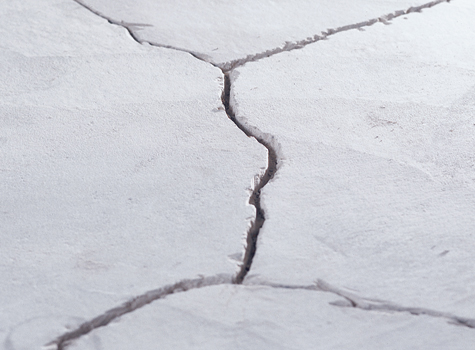
Instructions for eliminating defects that have arisen are primarily based on the type of crack.
There are the following types of such defects:
- Through. It occurs due to the action of axial tensile forces or forces with a low level of eccentricity;
- Cracks in the stretched zone. Are the result of the bending of the product or are located perpendicular to the reinforcement rods;
- Defects caused by shear force or shear cracks. Such cracks are directed at an angle to the reinforcement rods;
- Cracks located parallel to the reinforcement rods can occur in the anchorage area if it is improperly produced, as a result of soil heaving or in case of uneven settlement of a monolithic structure;
- Small cracks can occur due to temperature changes on the surface of the concrete product and its inner layers;
- Hair cracks can also occur due to temperature changes, but their depth does not exceed a couple of millimeters.
Defect elimination methods
In a freshly applied solution, defects of this kind can be eliminated without special costs, simply by re-compacting the mixture.
Note! A solution is considered to be freshly applied, after pouring no more than 1-2 hours have passed.
Well, in order to remove cracks in an already frozen structure, you will have to use one of the following methods:
- Injection method... A repair compound is injected into the crack under pressure;
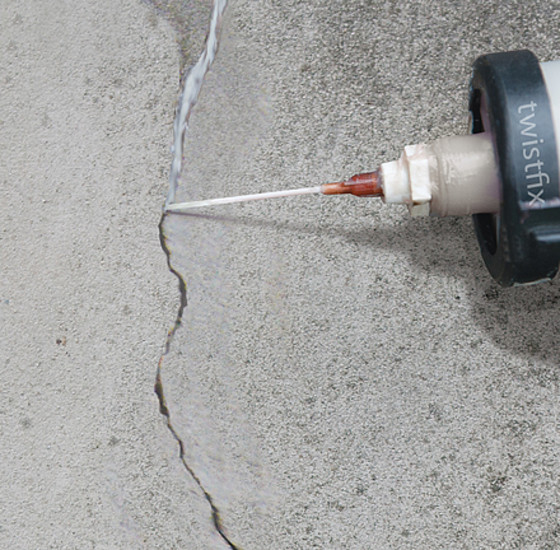
Note! Some repair compounds can, in addition to sealing cracks, also displace water from the formed cavity, but their price will be noticeably higher.
- Embedding method, providing for filling the defect with a concrete composition.
Crack sealing
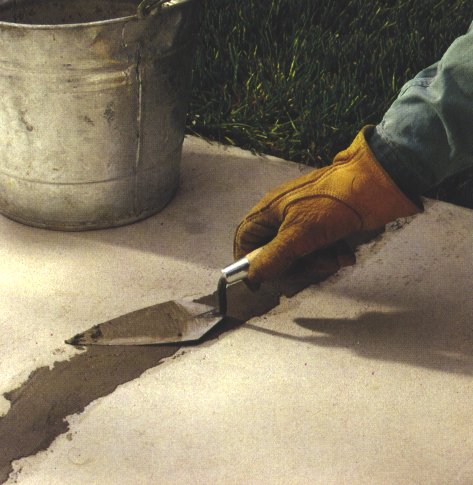
This method is most often used in practice, because every owner can handle it with his own hands without the help of professionals.
Council. As a rule, for its implementation, it is necessary not only to fill the void with a solution, but also to pre-treat the surfaces in order to ensure the best adhesion.
In order to independently repair cracks on the surface, it is necessary to prepare or purchase the following materials and tools:
- Sander;
- Chisel;
- Putty knife;
- A hammer;
- Brush with hard metal rods;
- Vacuum cleaner;
- Trowel;
- Brush;
- Rake or rule;
- Pure water;
- Cement flour;
- Wire;
- Glue;
- Metal trowel.
Now it remains to answer the questions about how to cover up the cracks and how to do it correctly?
This task involves the execution of the following stages of repair work:
- Preparatory activities. First, you need to inspect the crack itself and identify weak points around it. Further, using a chisel and a hammer, it should be expanded and deepened to at least 5 mm. This is necessary so that the repair compound is reliably entrenched in its depth and does not fall out;
Council. If the need arises, you can deepen the crack using the sharp edge of the trowel.
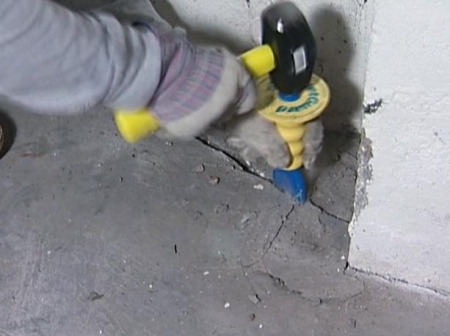
- Now the crack should be thoroughly rinsed, removing the remaining dirt and particles of cement stone. To completely remove dust from the surface, use a vacuum cleaner. Using a sponge will dry the crack and rid it of excess moisture;
- If the reinforcement was exposed during the expansion of the crack, then before starting work with the solution, the metal should be treated with primers with anti-corrosion action;
- In order to carry out the filling, professionals recommend using a sandy mortar consisting of cement and sand in a ratio of 1 to 3. PVA glue can also be added to such a solution;
Council. Sufficiently deep surface defects should be filled in several layers, be sure to moisten each layer to ensure high-quality filling and uniform drying of the solution.
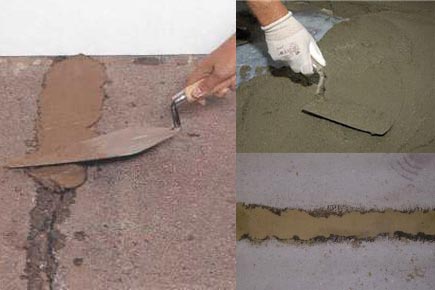
- In some cases, cracks should be reinforced using small pieces of reinforcing metal wire;

- The surface of the crack filled with mortar is carefully leveled with a trowel;
- The remaining protruding parts of the mortar should be sanded with a specialized grinder.
How to prevent cracking of the monolith
The most common and most common cause of cracks in concrete is non-compliance with the proportions of water and cement in the mortar. It is such a violation of the technology that leads to a decrease in the quality of the concrete itself and the subsequent cracking in an intensive mode. It is for this reason that special attention should be paid to these proportions when working with concrete.
In addition to this error, in the process of mixing the concrete mixture, the compaction of the mortar with the help of specialized vibrators is of considerable importance. You should not underestimate the importance of correct and competent in the process of drying and hardening.
Council. In order to prevent too strong evaporation of moisture from the surface and to prevent uneven drying of the mass, cover the solution with a damp cloth.
Particularly dangerous can be cracks that appear on the surface, the operation of which is carried out in conditions of temperature drops with frequent transitions over the 0-degree mark.
The fact is that when moisture freezes, which gets into the very depth of the crack, it expands, deepening and expanding the size of the defect. The result of such processes can be the exposure of metal reinforcement and the occurrence of corrosion, which will lead to a decrease in the strength of the entire structure.
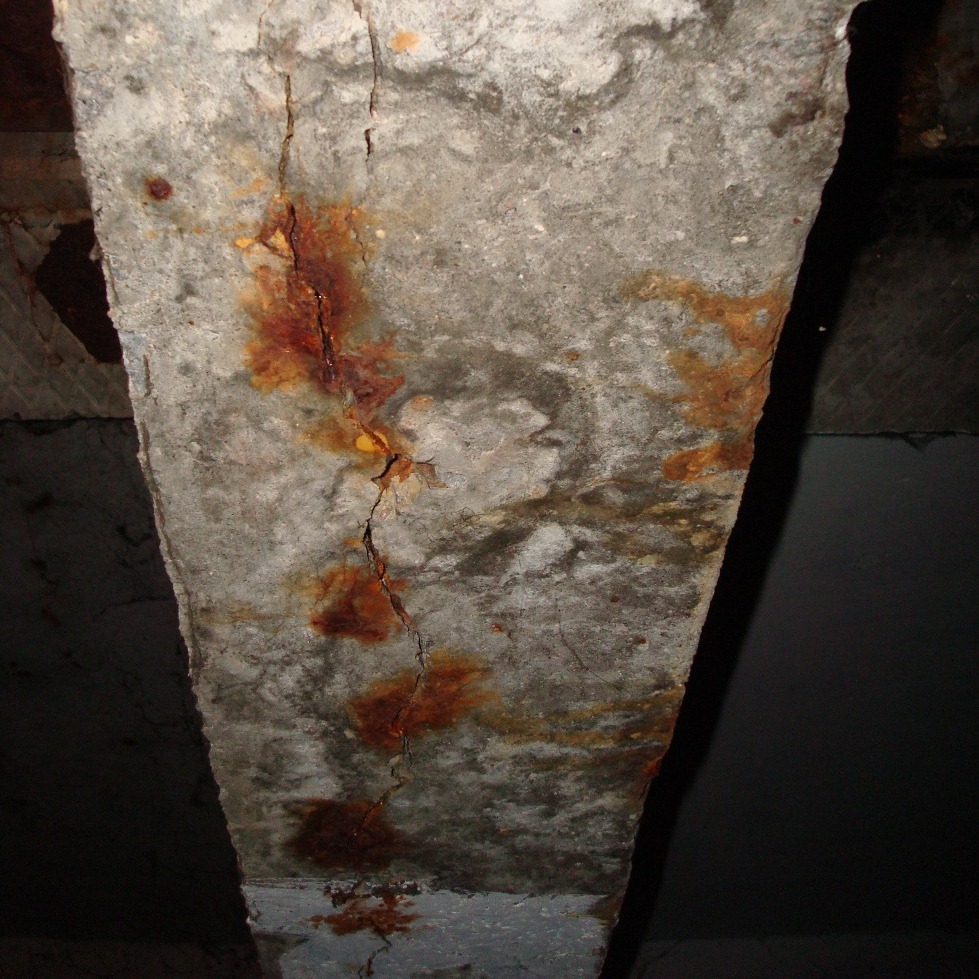
In order to timely identify cracking and eliminate this defect before irreparable consequences occur, the concrete surfaces should be regularly inspected, the identified defects should be fixed and their sealed. Thus, you will have the opportunity to localize cracking at the earliest stage and reduce the amount of repair work performed.
Council. In no case do not allow yourself to be lazy and postpone the repair for later, even if we are talking about very small defects.
Finally

Cracks on the concrete surface, whether shrinkage cracks in concrete according to SNiP or cracks in foam concrete, are the first sign that something was done wrong during the construction process. And if you cannot undo what has been done, then you should take care of it already at the stage of operation, repairing the defect immediately after its occurrence and preventing the growth of cracks and an increase in their number.
And the video in this article will tell you even more about what cracks are and how to deal with them.



